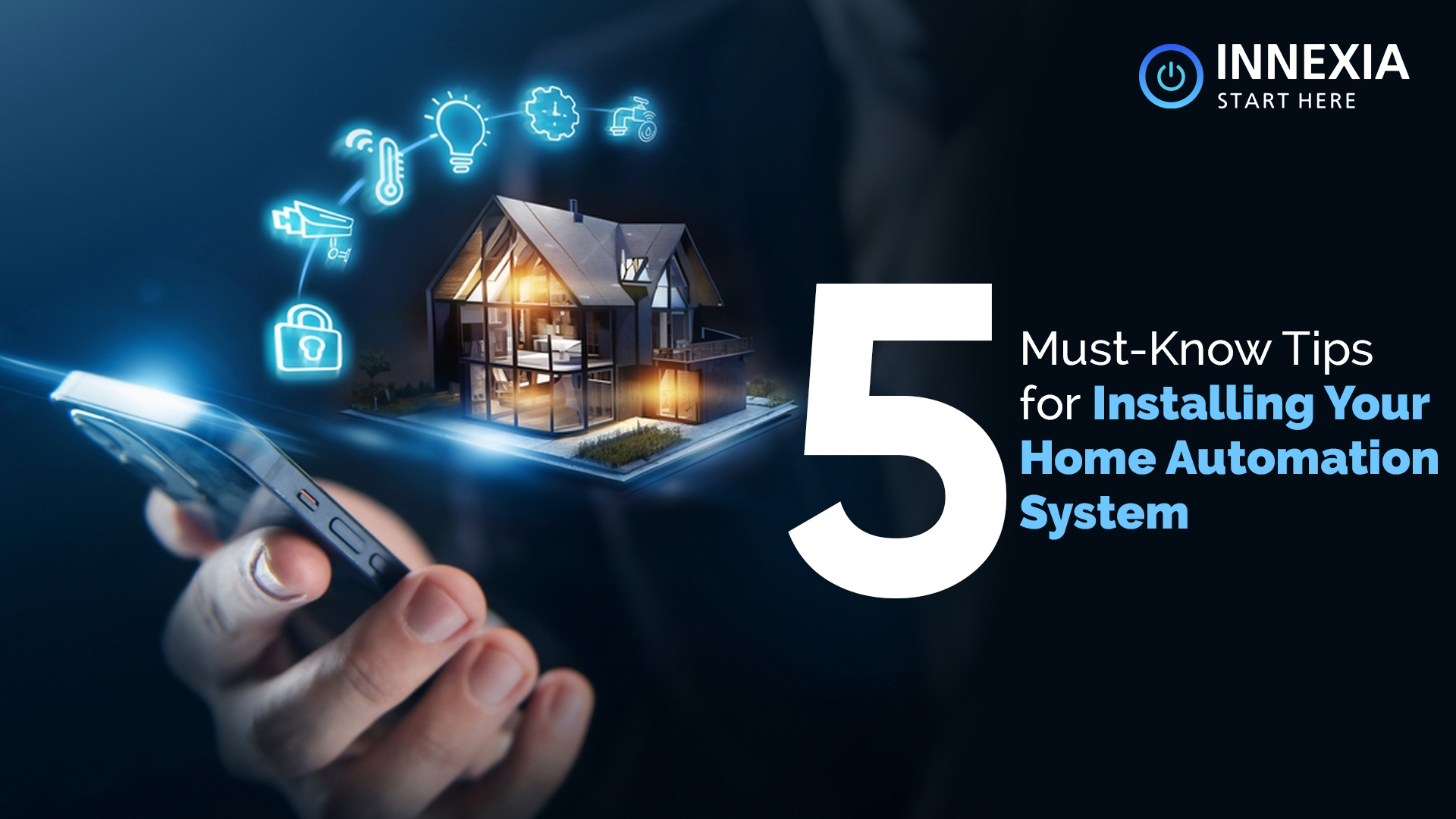Home automation is changing the way people live by making daily routines easier, more efficient, and more secure. With just a voice command or a tap on your smartphone, you can control lighting, temperature, appliances, and security systems.
However, choosing the right setup can be overwhelming with so many smart devices available.
You do not need every new gadget on the market. The key is to find what works best for your lifestyle and budget. This blog shares practical tips that will help you plan and install your home automation system in a way that is smart, simple, and effective.
How Does a Smart Home System Work?
A smart home system works by connecting different devices like lights, thermostats, cameras, and door locks through Wi-Fi or other wireless networks.
These devices can be controlled through a mobile app or voice assistant such as Alexa, Google Assistant, or Siri. You can manage each device individually or set them to work together.
Smart home automation runs on three key features: schedules, rules, and scenes. Schedules let you automate tasks based on time.
Rules trigger actions when something happens, like a door opening. Scenes allow multiple devices to work together with one command, such as locking doors and turning off lights at bedtime.
Components of Home Automation
Central Hub or Controller
This is the main control unit. It connects all your smart devices and lets them communicate. Some setups use a separate hub, while others work through an app on your phone.
Smart Devices
These are the tools that do the work—like smart lights, locks, thermostats, and cameras. Each one connects with your system to follow your commands or schedules.
Communication Technologies
Wireless protocols such as Wi-Fi, Bluetooth, Zigbee, and Z-Wave enable smart devices to interact seamlessly. These make sure your devices stay connected and respond properly.
Mobile Apps and Voice Assistants
Most smart homes are controlled through apps on your phone. You can also use voice assistants like Alexa or Google Assistant to manage things hands-free.
Sensors and Detectors
Sensors help your system react to what’s happening. They can detect motion, open doors, or changes in temperature. This allows your home to adjust things automatically, like turning on lights when you walk in.
7 Pro Tips for Seamless Smart Home Integration
Smart home technology offers comfort, control, and peace of mind. But to truly benefit from it, your setup needs to be planned wisely. Here are seven helpful tips to make your home automation system efficient, secure, and easy to manage.
- Invest in a Strong and Stable Network
Solid network performance is crucial for seamless smart home operation. Choose a high-quality Wi-Fi router and a dependable internet provider to ensure smooth device communication, faster responses, and fewer interruptions across your home automation setup. - Prioritize Security Settings
Keep your smart home safe by securing your Wi-Fi with a strong password and WPA3 encryption. Use two-factor authentication, update devices regularly, and avoid using default credentials to protect your network and personal data from unauthorized access. - Start Small and Build Slowly
Avoid the urge to automate everything at once. Begin with one priority area such as lighting, temperature, or home security. As you get comfortable managing it, slowly expand your smart home system based on your daily needs and preferences. - Use Geofencing for Smarter Automation
Geofencing lets devices respond to your location. For example, lights turn off when you leave or the thermostat adjusts when no one’s home. It improves efficiency, reduces energy bills, and adds a personalized touch to your home automation. - Check Device Compatibility
Not all smart devices work together. Always read product specs to confirm compatibility with your existing system. This avoids future frustration and ensures all devices communicate properly, especially when using a specific voice assistant or automation platform. - Add a Smart Speaker or Display
Voice assistants like Alexa, Google Assistant, or Siri offer hands-free control of your smart devices. Adding a smart speaker or display enhances convenience, allowing you to manage lights, music, appliances, and more with simple voice commands. - Consider Using a Smart Hub
A smart hub connects and manages all your devices from one place. It reduces Wi-Fi load, improves performance, and helps different brands work together seamlessly. Hubs are ideal for expanding smart homes with multiple automation layers.
Conclusion
At Innexia, comfort, convenience, and safety come together to create smarter living. As a trusted home automation company in Ahmedabad, we offer solutions that fit perfectly into your daily life. From smart lighting and climate control to advanced security systems, every feature is designed to simplify routines and keep your home secure.
Upgrade to smart living with Innexia and see how the right technology can transform your home.



